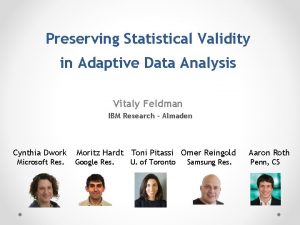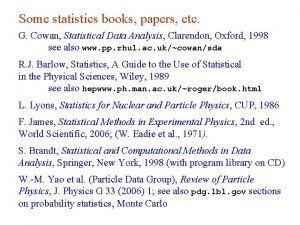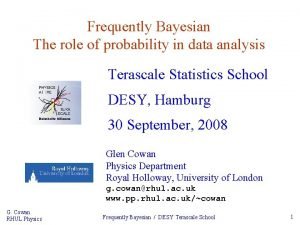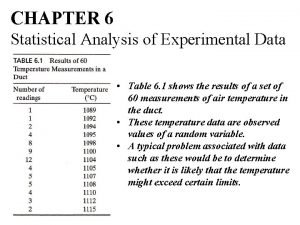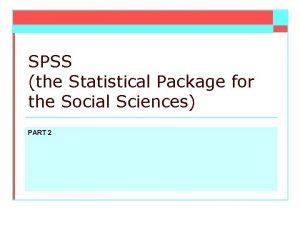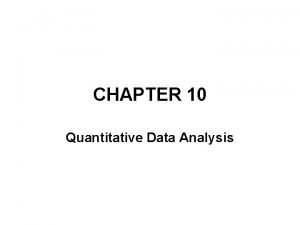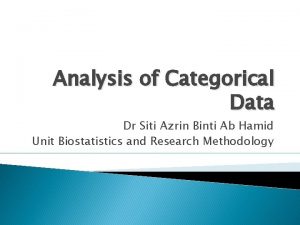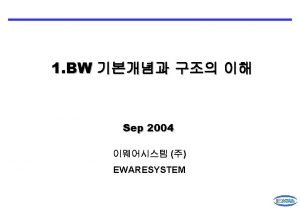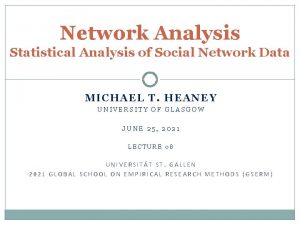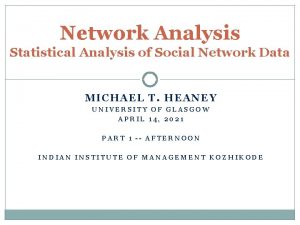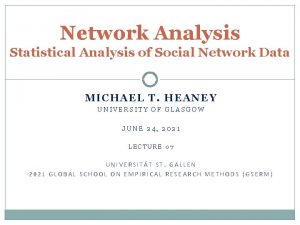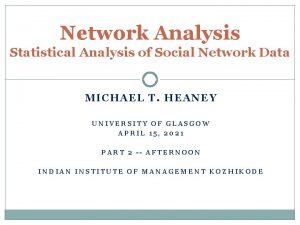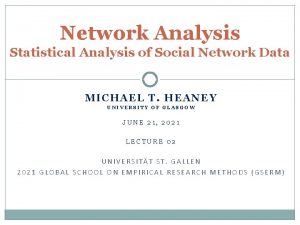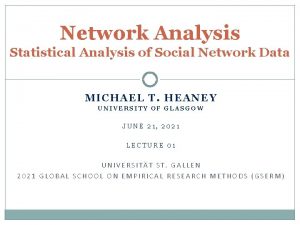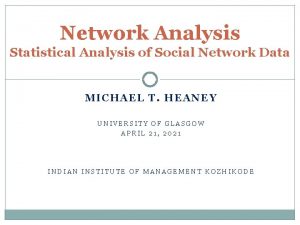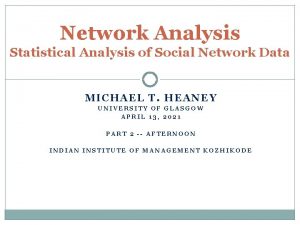Network Analysis Statistical Analysis of Social Network Data









- Slides: 9

Network Analysis Statistical Analysis of Social Network Data MICHAEL T. HEANEY UNIVERSITY OF GLASGOW APRIL 15, 2021 PART 1 -- MORNING INDIAN INSTITUTE OF MANAGEMENT KOZHIKODE

Inferential Network Statistics

The Problem of Network Dependence �Observations in a network are not independent of one another as required in classical statistical analysis. AB AC AD AE BC BD BE CD CE DE

Regression with Network Autocorrelation �We may want to use networked variables as dependent or independent variables in a typical regression. �For example, degree, centrality, and brokerage are common variables. �Follows models developed for spatial autocorrelation analysis, only the weighting matrix is determined by a network, rather than geographic contiguity. �Example: Y = b. X + g. NY + e, where Y is normally distributed and N is a network.

Regression on Ties in a Network � The network tie is the dependent variable. � Why do two nations form an alliance? Why do they break the alliance? � Chief problem: The independence assumption is severely violated. AB AC AD AE BC BD BE � There are multiple possible approaches to address this problem.

Simulating Independence �Many inferential statistics on networks involve some form of simulating independence. �We will learn three simulation approaches: Permutation tests The quadratic assignment procedure Exponential random graph models

Permutation Tests �Are sometimes referred to as “randomization tests”. �Permutation tests are generally performed with a correlation or a regression framework when network autocorrelation may be present. �An “exact” permutation test takes place by estimating the model with all possible orderings of the data. There are n! possibilities. n! = n x (n-1) x (n-2). . . 3 x 2 x 1.

Quadratic Assignment Procedure (QAP) �QAP is similar to a permutation test, but it is used in the case of an entire network, rather than just a regression analysis. �QAP scrambles the rows and the columns of a matrix in order to generate a new distribution against which the empirical observations can be compared. �An exact test is usually not possible, since the number of possibilities is too large. n 2! Is generally an enormous number for most real networks.

Comments / Questions
 Preserving statistical validity in adaptive data analysis
Preserving statistical validity in adaptive data analysis Cowan statistical data analysis
Cowan statistical data analysis Cowan statistical data analysis pdf
Cowan statistical data analysis pdf Statistical analysis of experimental data
Statistical analysis of experimental data Statistical package for social science
Statistical package for social science Social thinking social influence social relations
Social thinking social influence social relations Social thinking social influence social relations
Social thinking social influence social relations Data collection in research example
Data collection in research example What statistical test for categorical data
What statistical test for categorical data Statistical data warehouse
Statistical data warehouse
